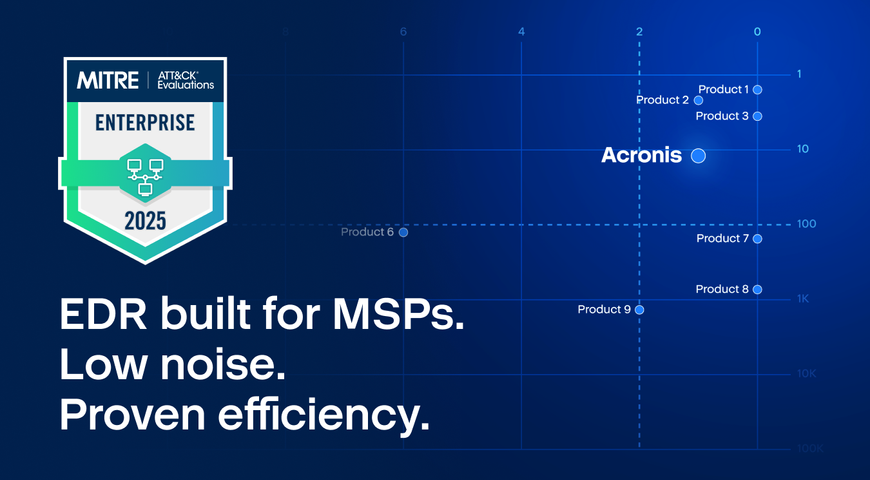
Definition: Patch management is the continuous lifecycle of identifying, acquiring, testing, and deploying code updates to endpoints, servers, and applications to resolve security vulnerabilities and improve stability.
The 5-Step Process:
- Discovery: Inventorying all hardware and software assets.
- Prioritization: Ranking vulnerabilities based on CVSS scores and business impact.
- Testing: Validating updates in a sandbox to prevent system instability.
- Deployment: Automating the rollout of patches during maintenance windows.
- Verification: Confirming installation and generating compliance reports.
- Core Problem Solved: It mitigates the risk of cyberattacks exploiting known vulnerabilities (CVEs) while ensuring compliance with standards like GDPR, HIPAA, and PCI-DSS.
- Modern Solution: Integrated platforms like Acronis Cyber Protect Cloud combine patching with backup and endpoint detection and response (EDR) to ensure resilience.
Part 1: Understanding the Essentials of Patch Management
In the high-stakes arena of cybersecurity, history teaches harsh lessons. The global WannaCry ransomware attack crippled hospitals and businesses worldwide. It did not require sophisticated zero-day magic; it exploited a known Windows vulnerability for which a patch already existed months earlier. Similarly, the massive Equifax breach (leading to a US FTC settlement of up to $425 million) stemmed directly from an ignored flaw in Apache Struts.
The lesson is undeniable: The most devastating attacks often exploit the most mundane oversights.
The Threat Landscape: Why You Can't Afford to Wait
Unpatched systems represent the "lowest-hanging fruit" for cybercriminals. Attackers don't need to work hard when an open door is left unguarded.
- Explosion of Vulnerabilities: The volume of these open doors is exploding. In 2024 alone, more than 40,009 Common Vulnerabilities and Exposures (CVEs) were published—a staggering 38% increase compared to the previous year. This means an average of 108 new vulnerabilities are disclosed every single day.
- High Cost of Inaction: Industry analysis shows that 76% of ransomware attacks analyzed in 2022 exploited known vulnerabilities. Breaches exploiting unpatched vulnerabilities cost an average of $4.17 million. Threat actors often exploit newly disclosed vulnerabilities within the first month after a patch is released, making speed critical.
Patch management is no longer just a routine IT task. As defined by NIST SP 800-40, it is proactive, non-negotiable cyber hygiene.
The Anatomy of a Patch
Not all updates serve the same purpose. Understanding the distinction is vital for prioritization.
- Security Patches: These are the most critical. They address specific vulnerabilities to block exploitation by threat actors.
- Bug Fixes: These resolve code errors to improve system stability and prevent crashes.
- Feature Updates: These introduce new capabilities or functionality to the software.
- Hotfixes: These are urgent updates applied outside the normal release cycle to fix immediate, critical issues.
Why It Is Non-Negotiable
An effective patching strategy delivers four core benefits.
- Cybersecurity: It closes the gap before an attacker can exploit a CVE.
- System Stability: It prevents software crashes and conflicts that degrade user experience.
- Compliance: Regulations like GDPR, HIPAA, and PCI-DSS explicitly require organizations to maintain secure systems. Failing to patch is often a direct compliance violation.
- Productivity: It ensures compatibility with the latest software ecosystems and hardware.
With over 40,000 vulnerabilities discovered annually, manual tracking is impossible. Automation and strategy are the only ways to keep up.
Part 2: The 5-Step Patch Management Process
Implementing a structured lifecycle reduces chaos and improves security posture. Follow this five-step framework to build a resilient patching engine.
Step 1: Discovery and Inventory
You cannot patch what you cannot see. The first step is creating a comprehensive inventory of every server, laptop, mobile device, operating system, and third-party application in your network.
Shadow IT and transient devices often escape manual inventory. This creates blind spots. Advanced solutions like Acronis Cyber Protect Cloud utilize Device Sense™ technology. This provides continuous discovery of all devices on the network. It builds hardware and software inventories automatically and supports vulnerability assessment for over 320 Windows applications.
Step 2: Prioritization
With thousands of patches released, IT teams must decide what comes first. Not every patch is an emergency.
Use CVSS (Common Vulnerability Scoring System) scores combined with threat intelligence to gauge business impact. High-severity vulnerabilities on critical servers take precedence over low-risk feature updates on non-critical workstations.
Acronis streamlines this phase by conducting continuous vulnerability assessments. It identifies, quantifies, and prioritizes vulnerabilities based on severity. Furthermore, it utilizes AI-based patch stability scoring to predict which updates might cause system instability. This allows you to make informed risk decisions instantly.
Step 3: Testing
This phase presents the classic "Speed vs. Stability Tradeoff."
Fully automated patching is fast, but it risks crashing systems if a patch is buggy. Manual testing ensures stability, but it leaves the vulnerability exposed for too long. This delay is known as patch latency.
Acronis solves this dilemma with Fail-Safe Patching. The system automatically creates a pre-patch image backup before installation. If the patch fails or causes instability, you can revert to the previous state instantly. This capability allows IT teams to automate with confidence and eliminates the fear of bad updates.
Step 4: Deployment
Once prioritized and tested, patches must be deployed efficiently.
- Automate Deployment: Use automated policies to push updates to standard endpoints.
- Phased Rollouts: Deploy to a pilot group first. If successful, roll out to the wider network.
- Maintenance Windows: Schedule updates during off-hours to minimize user disruption.
Acronis allows for granular automated patch policies. You can schedule updates, customize approval workflows, and target specific device groups. This ensures deployment happens exactly when and how you want it.
Step 5: Verification and Reporting
The job is not done until you confirm the patch is successfully installed.
You must verify installation, monitor for post-deployment issues, and generate audit-ready reports. Centralized dashboards in Acronis provide real-time alerts on patch status. Automated reporting tools generate the documentation needed for compliance audits like HIPAA and PCI-DSS instantly.
Part 3: How to Select the Best Patch Management Software
Must-Have Features
To handle modern threats, a patch management tool must go beyond basic Windows updates. Look for the following capabilities.
- Cross-Platform Support: It must handle Windows, macOS, and Linux.
- Third-Party Application Patching: It must update apps like Adobe, Chrome, and Zoom.
- Automation: It requires robust scheduling and policy engines.
- Proprietary Technology: Avoid reliance on generic open-source scrapers that may lack accuracy.
- AI Integration: Look for AI-driven stability scoring and efficiency tools.
The "Unified" Difference
Most organizations use separate tools for backup, security, and patching. This creates "agent bloat" and management complexity.
Acronis Cyber Protect Cloud takes a unified approach. It is not just a patching tool. It combines Acronis RMM, backup, and EDR into a single solution. This eliminates compatibility issues and provides a single pane of glass for total infrastructure health.
Part 4: The Future of Patching
Cloud and Shared Responsibility
As infrastructure moves to the cloud, the Shared Responsibility Model applies. While providers secure the cloud hardware, you remain responsible for patching the operating systems and applications running on it.
Hybrid and Multi-Cloud Best Practices
Managing patching across on-prem servers and cloud instances requires centralized management. Patching should be part of the CI/CD pipeline for DevOps teams. Acronis enables the management of distributed endpoints from a single console, regardless of whether they are in AWS, Azure, or the office server room.
Patchless Remediation (Virtual Patching)
Sometimes a vendor patch is not available immediately. Virtual patching uses intrusion prevention systems (IPS) or shielding rules to filter traffic attempting to exploit a vulnerability. This is a critical interim measure provided by advanced security suites to buy time until a permanent patch is deployed.
Conclusion: Building a Proactive Patch Management Strategy
Patch management is the bedrock of cyber resilience. By moving from a reactive, manual process to an automated, intelligence-driven strategy, you close the security gaps that attackers rely on.
However, the tools you choose matter. A siloed approach where backup and patching do not communicate leaves you vulnerable to bad updates and downtime.
Acronis Cyber Protect Cloud changes the dynamic by integrating vulnerability assessment, patch management, and backup into a single solution. For MSPs and IT teams, this means less downtime, easier compliance, and the confidence that comes with fail-safe operations.
Learn More about Acronis Cyber Protect Management
Glossary: Key Terms You Need to Know
- Patch: A piece of code tailored to fix a bug or improve an operating system or application.
- Vulnerability: A weakness in a system or device that can be exploited by a threat actor.
- Exploit: A technique or code used to take advantage of a vulnerability.
- Zero-Day Vulnerability: A flaw that is exploited by attackers before the vendor is aware or has released a patch.
- CVE: A reference method for publicly known information-security vulnerabilities.
- CVSS: An open framework for communicating the characteristics and severity of software vulnerabilities. The scale ranges from 0.0 to 10.0.
- Sandbox: An isolated environment used to test patches safely before wider deployment.
- Endpoint: Any physical or virtual device connected to a network.
About Acronis
A Swiss company founded in Singapore in 2003, Acronis has 15 offices worldwide and employees in 50+ countries. Acronis Cyber Protect Cloud is available in 26 languages in 150 countries and is used by over 21,000 service providers to protect over 750,000 businesses.



